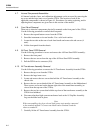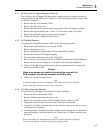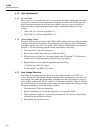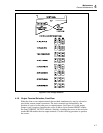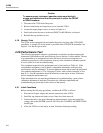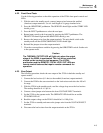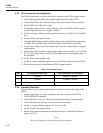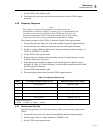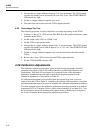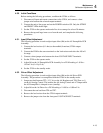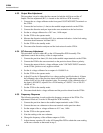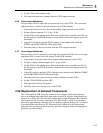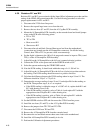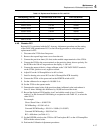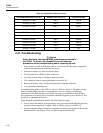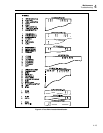
5 220A
Instruction Manual
4-12
4. Increase the ac voltage calibrator output in 1.0V rms increments. The 5220A should
switch to the standby mode at between 20.0 and 24.0 V rms. The OVERCURRENT
LED should also light.
5. Set the ac voltage calibrator output to zero volts.
6. Disconnect the load resistor from the 5220A output terminals.
4-28. Overvoltage Trip Test
The following procedure is used to check the overvoltage trip setting on the 5220A:
1. Connect a 1 ohm ±5 %, 10 W resistor (Dale RH-10) to the enabled (front/rear) output
terminals on the 5220A.
2. Set the output of the 5220A to 3.0000 V rms.
3. Set the 5220A to the operate mode.
4. Increase the ac voltage calibrator output in 0.1 V rms increments. The 5220A should
switch to the standby mode with an input of 3.1 to 3.5 V rms. The OVERVOLTAGE
LED should also light.
5. Set the ac voltage calibrator output to zero volts and disconnect the unit from the
5220A.
6. Remove the 1 ohm, 10 W resistor from the 5220A output terminals.
7. Set the 5220A POWER switch to OFF.
4-29. Calibration Adjustments
The calibration adjustment procedures given in the following paragraphs should be
performed after repair of the 5220A and/or when the unit fails the performance-test
requirements. If the unit will not respond to, or meet the limits of the adjustment
procedures, troubleshooting and repair is indicated. Equipment required for the
calibration adjustments is listed earlier in Table 4-1.
All calibration adjustments are accessible when the top and large inner covers are
removed from the 5220A. Figure 4-1 identifies the location of the assemblies, test points,
and adjustments that must be accessed to complete the calibration adjustment procedures.
To ensure optimum results, the calibration adjustments must be performed at an ambient
temperature of 22 to 24 degrees Celsius, with a relative humidity of less than 85 %. Also
the unit should be allowed to warmup in the operate mode (with the top cover in place)
for at least 30 minutes before starting the adjustment procedures.



